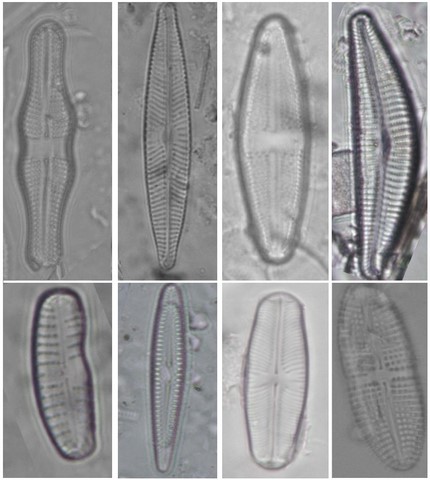Dynamics and composition of the diatomological assemblages of two Argentine Northwest streams in relation to environmental variables
DOI:
https://doi.org/10.30972/bon.3216372Keywords:
Bioindication, diatoms, lotic systems, water qualityAbstract
The Salí-Dulce basin is one of the main in the Northwest of Argentina and is affected by significant ecological changes due to the presence of polluting substances along its way. Diatoms are a prominent algal group in aquatic ecosystems. Their biology and taxonomy are suitable for their use in biomonitoring based on their specific responses to environmental changes. The objective of this study was to characterize the dynamic and composition of the taxocenosis of diatoms and their relationship with environmental variables in the Mista and Calimayo streams, belonging to the Salí-Dulce river basin (Tucumán-Argentina). For this, three sites were selected in each stream, and data on environmental and biological variables were collected according to conventional methodologies. Water quality was variable depending on the presence of pollutants and climatic seasonality. The diatom assemblage resulted as a sensitive taxocenosis bioindicator of the stream status. In this work, a total of 61 species were recorded, of which 11 could be good indicators for stream contamination. The use of two biotic indices makes it possible to affirm that the Pampean Diatom Index, modified on the basis of our data, resulted to be more sensitive and effective in determining water quality, which is why it could be considered as a tool for diagnosis, water quality monitoring and water planning that could provide valid information of easy application in basins of the Northwest of Argentina.Downloads
Download data is not yet available.

Downloads
Published
2022-12-29
How to Cite
Taboada, M. de los Á., Alderete, M., Bustos, M. S., & Gultemirian, M. de L. (2022). Dynamics and composition of the diatomological assemblages of two Argentine Northwest streams in relation to environmental variables. Bonplandia, 32(1), 39–56. https://doi.org/10.30972/bon.3216372
Issue
Section
Original papers
License
Declaration of Adhesion to Open Access
- All contents of Bonplandia journal are available online, open to all and for free, before they are printed.
Copyright Notice
- Bonplandia magazine allows authors to retain their copyright without restrictions.
- The journal is under a Creative Commons Attribution 4.0 International license.














.jpg)


